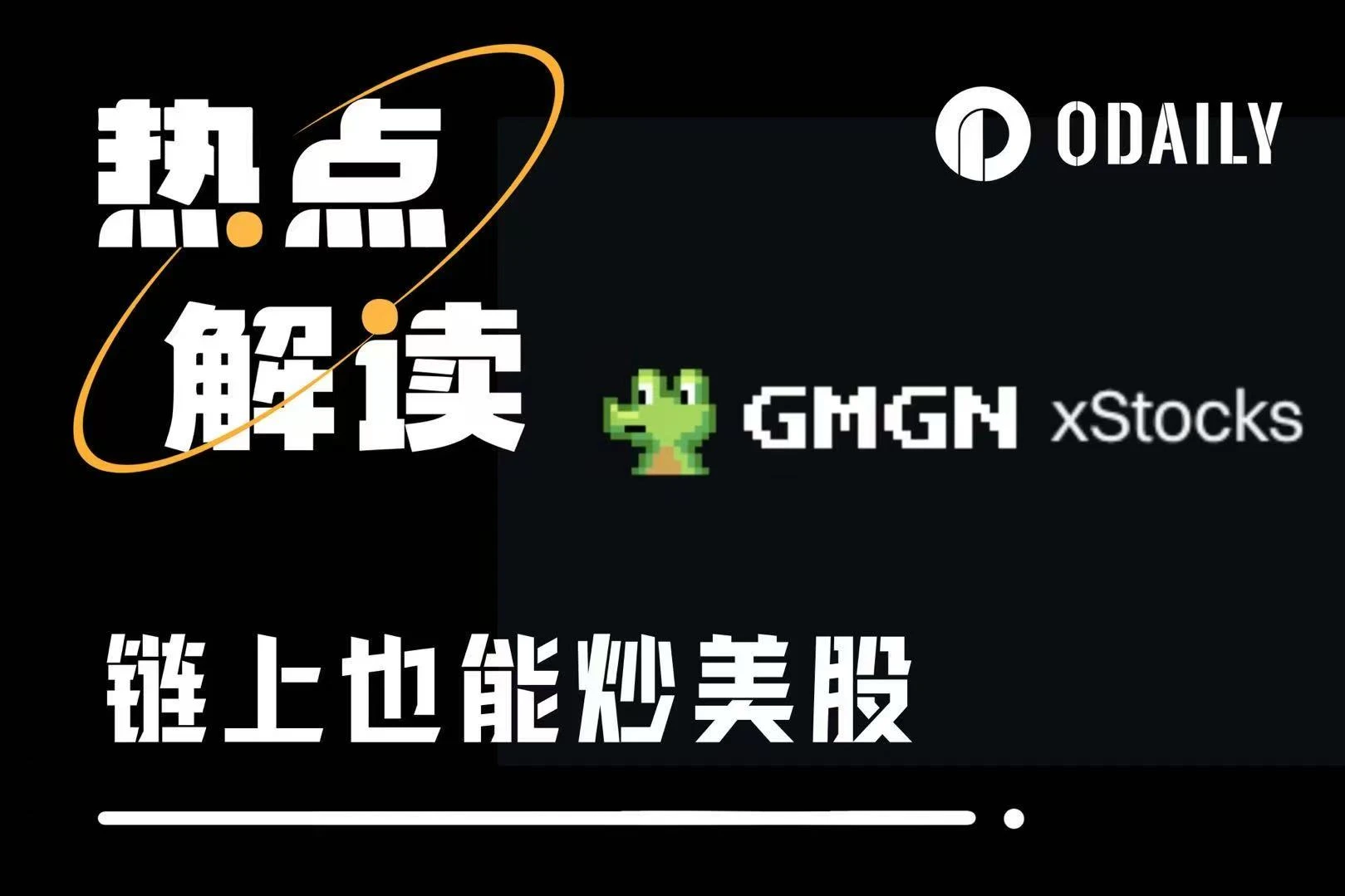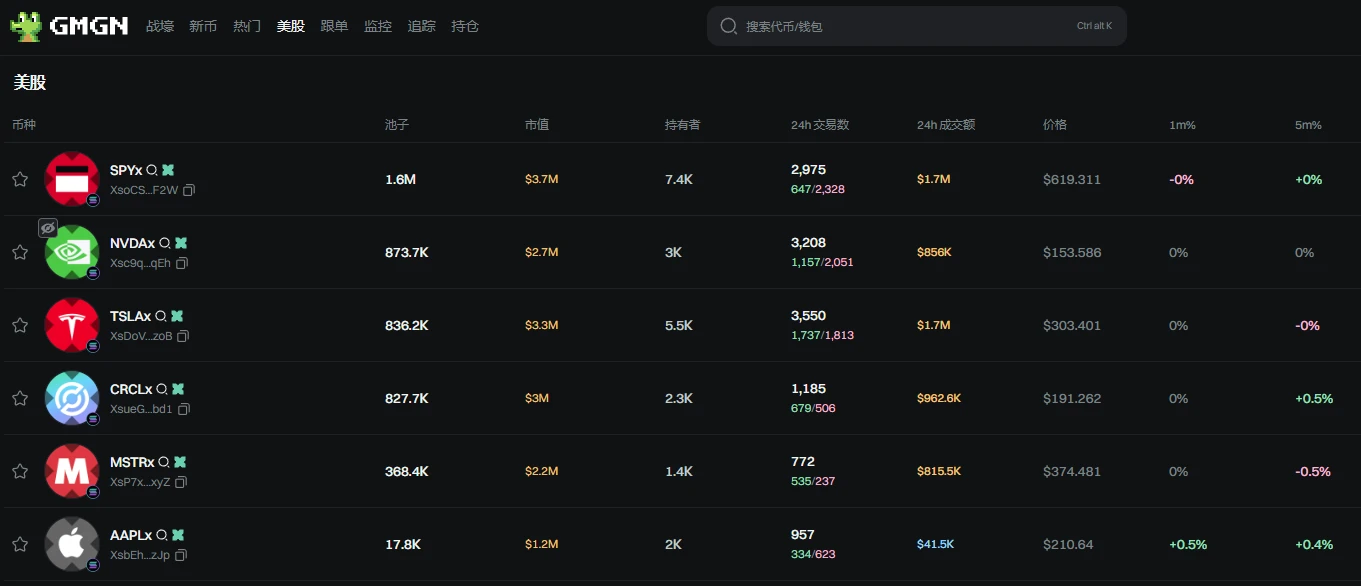Original | Odaily Planet Daily ( @OdailyChina )
Author | Asher ( @Asher_0210 )

Yesterday, Kraken was the first to support xStocks, allowing users to trade 60 tokenized US stocks on the platform; Bybit quickly followed suit, listing popular US stocks such as AAPL, TSLA, and NVDA; Robinhood also announced that it would support US stock trading on the blockchain and planned to launch its own public chain. For a time, cryptocurrencies and US stocks achieved a two-way rush at the product level.
The contrast between this lively scene and the deserted Meme is too great. The recent Meme can be said to be that new projects are not popular, old projects are quiet, and even the few communities where people chat about daily life are almost no longer discussing the market. Opening the social network every day is like entering a retirement channel. Slowly, I also lay down completely and give up my health.
Just when I was getting used to the Buddhist way of life, I saw the US stock section launched by GMGN.
At first I thought I was dazzled, but when I clicked in, I saw CRCL, AAPL, TSLA, AMZN, and NVDA all neatly listed in the market list (just with an extra x suffix). I even went to the GMGN official Twitter account and found that on-chain US stock trading was really launched, supported by xStocks, and users can use SOL to buy all the popular US stocks with one click. Familiar page, unfamiliar trading pairs, at that moment, I suddenly had an illusion: I became a traditional trader.

To be honest, when I saw the more than 60 tokenized US stocks on GMGN, I was a little excited. The news of BTC and ETH listing ETFs did make me emotional, but in the final analysis, it is still a bit far from retail investors on the chain like me. But this time is different. I can buy AAPL and sell TSLA directly on GMGN with my wallet, and watch the price fluctuations of NVDA while eating. For me who does not have a US stock account, who would have dared to think of this feeling of trading US stocks on the chain a few days ago?
I even started fantasizing:
The SOL in my wallet is no longer just virtual currency, but my ticket to enter and exit Wall Street;
Every on-chain buy and sell transaction is like knocking on a secret door to Nasdaq;
No longer have to worry about having no projects to participate in when there is no local dog market on the chain;
When chatting with friends in the future, the question will no longer be “Is this local dog still worth buying?”, but “What do you think of Nvidia’s financial report tonight?”
But soon, I calmed down. After all, trading still depends on details. After a round of experience, the filters of US stock traders began to shatter. The biggest problem is liquidity. At present, there are 10 US stock trading pairs on the US stock section of GMGN with users participating in transactions, but there are only 5 US stock trading pairs with liquidity pools exceeding US$100,000. Among them, the most liquid is SPYx (SP 500 Index), whose token market value is less than US$4 million and the liquidity pool is only US$1.6 million.
Embrace new things, after all, this is just the beginning. On-chain US stock trading technically bypasses the cumbersome processes of traditional brokerages. Thresholds such as KYC, account restrictions, and T+1 settlement have been broken. As long as you have an on-chain wallet, you can directly participate in the transaction. In addition, as for the issue of liquidity, it can actually be gradually improved by providing liquidity rewards and airdrop incentives for tokenized US stocks. After all, compared with the previous pure on-chain dog tokens, the price fluctuations of US stocks are relatively stable and not prone to large fluctuations. If the rewards are in place, liquidity can be easily enhanced.
Therefore, my current strategy is to set up alerts for several US stocks on TradingView and GMGN. If the on-chain price is more than 3 points lower than the actual stock price due to liquidity issues, I will start buying in small amounts and batches. In addition, I also pay close attention to the trading hours and major events of US stocks, such as the release of financial reports or macroeconomic data, because these moments often exacerbate the price difference between the on-chain and US stock markets due to liquidity and other reasons, bringing more short-term opportunities.
In general, this strategy based on early warning and small-batch purchases not only allows me to participate in arbitrage opportunities in on-chain U.S. stock trading, but also effectively avoids potential risks brought by liquidity. It is a stable operating method that is suitable for the current market environment.
Anyway, now I am no longer a stinky P kid. I am an on-chain US stock trader.










